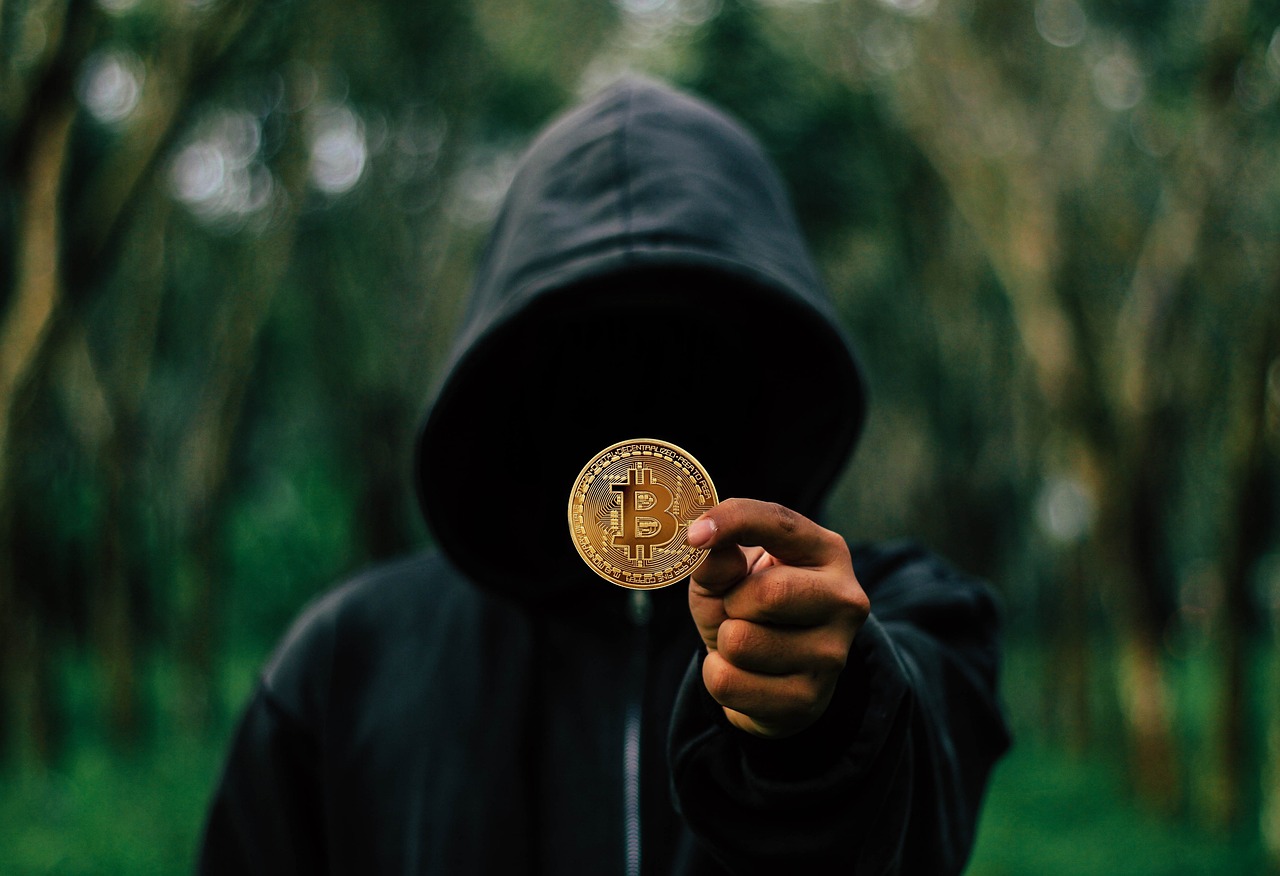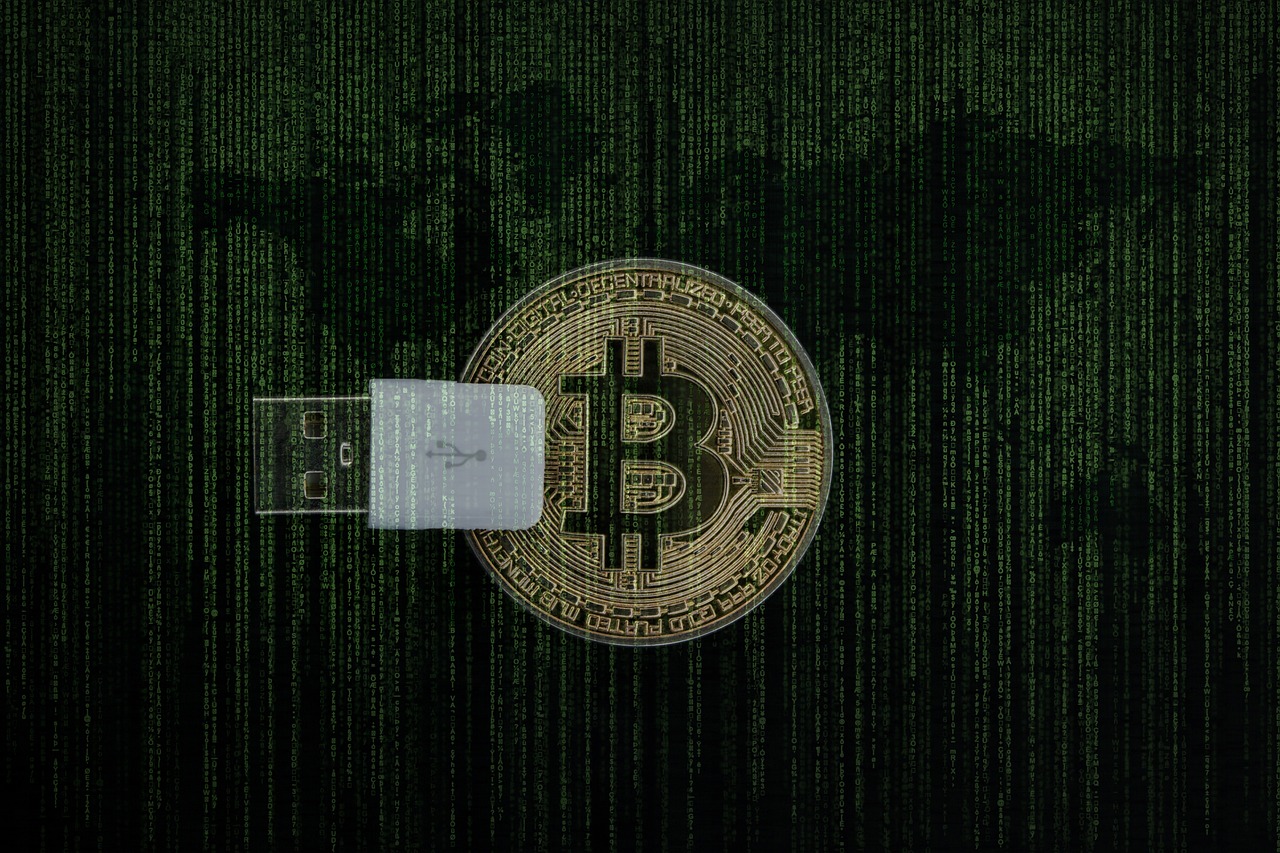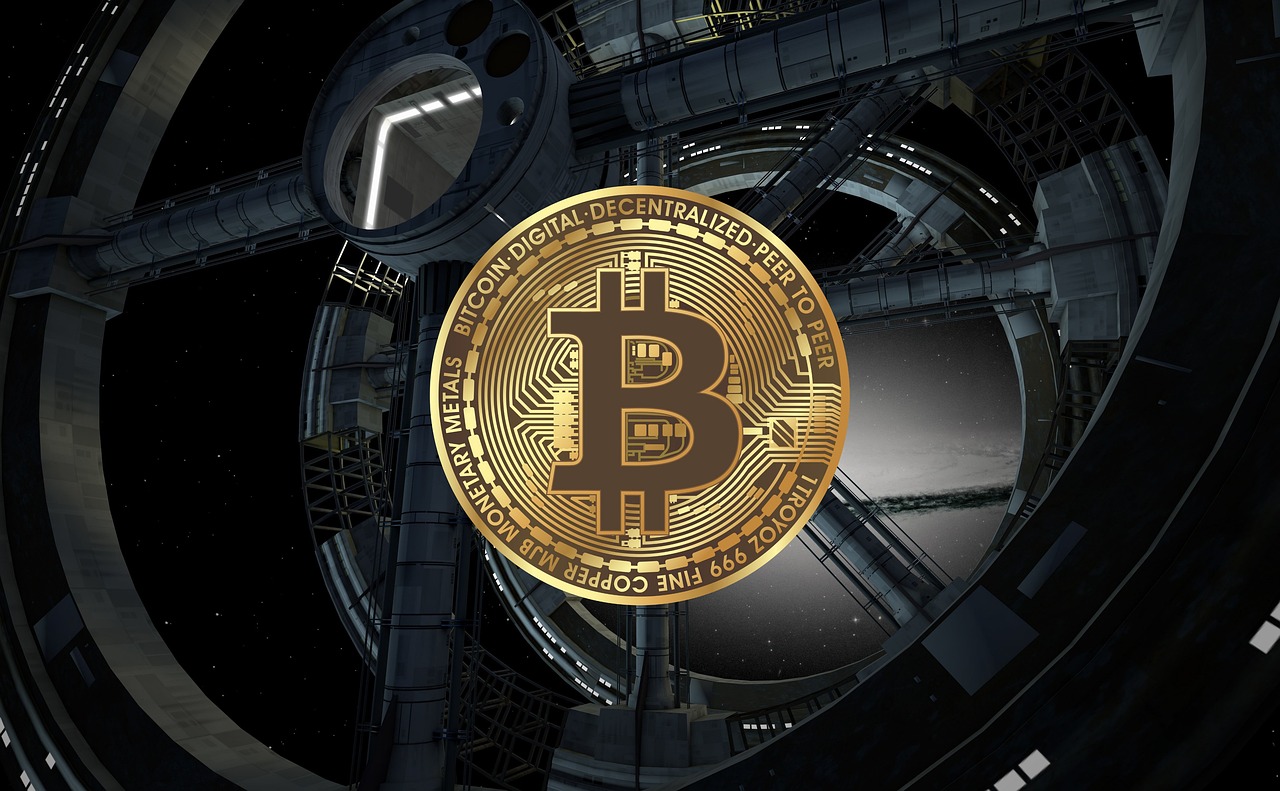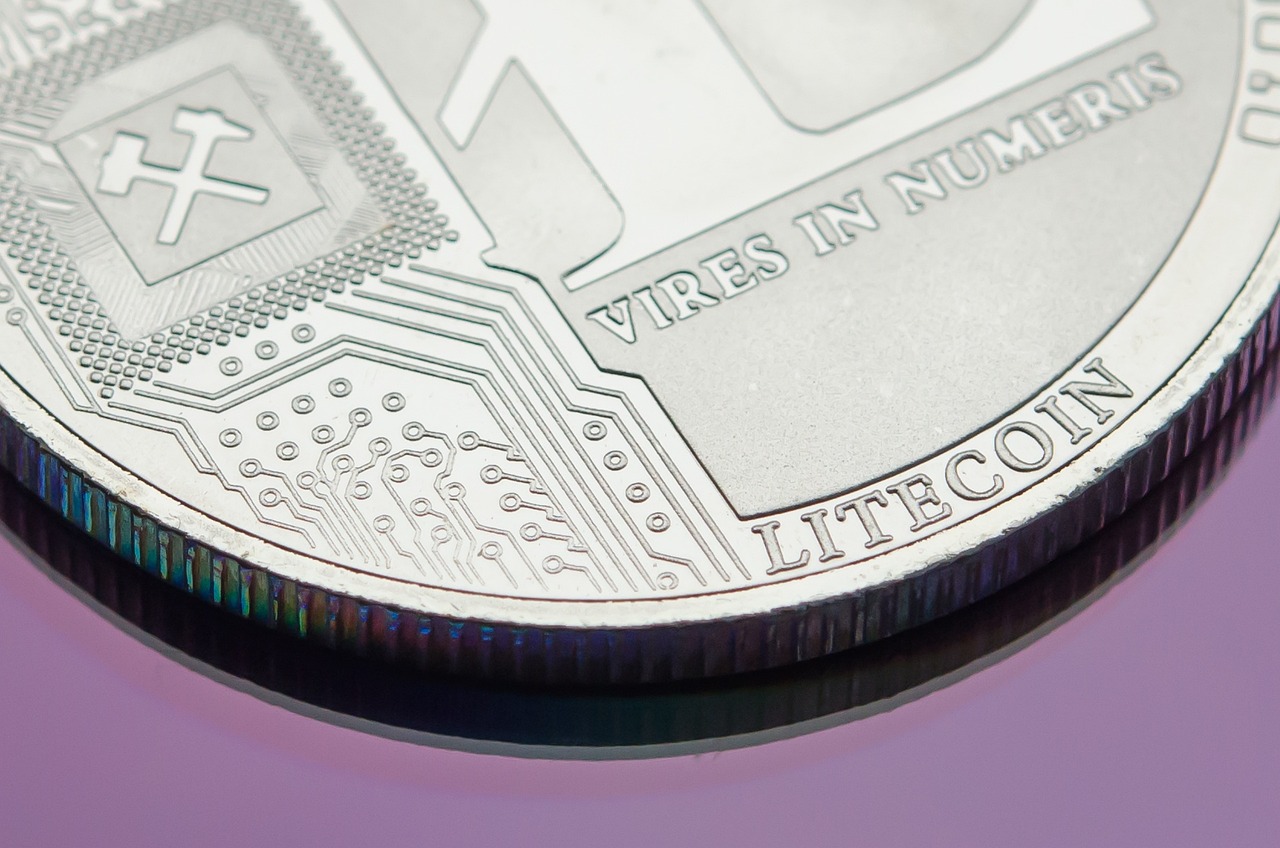Mirror Protocol - Creating Synthetic Assets
Welcome to the fascinating world of Mirror Protocol, where the boundaries of finance are pushed to new heights through the creation of synthetic assets. Imagine being able to invest in your favorite stocks, commodities, or even real estate, all without ever having to own the physical asset. Sounds intriguing, right? That's precisely what Mirror Protocol offers! By leveraging the power of blockchain technology, it allows users to gain exposure to real-world assets while enjoying the benefits of decentralization.
Synthetic assets, or mAssets, are the backbone of this innovative platform. They are designed to mirror the value of tangible assets, enabling traders to speculate on price movements without the complexities of traditional ownership. For instance, if you’ve ever wished to invest in a stock but found the barriers too high, mAssets can be your gateway. They provide an accessible entry point to global financial markets, breaking down the walls that often keep everyday investors at bay.
What makes Mirror Protocol even more exciting is its seamless integration with the Terra blockchain. This ensures that all transactions are not only secure but also efficient, allowing for quick trades and minimal fees. The magic happens through smart contracts—self-executing contracts with the terms of the agreement directly written into code. These smart contracts manage the creation and trading of mAssets, ensuring that the entire process is transparent and tamper-proof.
But hold on! Before diving headfirst into the world of synthetic assets, it's crucial to understand the key components that make Mirror Protocol tick. The two main elements are mAssets and oracles. mAssets are the synthetic representations of real-world assets, while oracles serve as the bridge between the blockchain and external data sources, providing real-time price feeds that maintain the integrity of these assets. This dynamic duo is what empowers users to trade with confidence, knowing that they are dealing with accurate and up-to-date information.
As we explore the depths of Mirror Protocol, it becomes clear that this platform is not just a passing trend; it’s a revolutionary step towards democratizing finance. By enabling anyone with an internet connection to access global markets, Mirror Protocol is paving the way for a more inclusive financial future. So, whether you're a seasoned investor or just dipping your toes into the crypto waters, the opportunities are vast and waiting for you to seize them!
- What are synthetic assets? Synthetic assets are financial instruments that replicate the value of real-world assets, allowing users to trade without owning the underlying assets.
- How does Mirror Protocol ensure the accuracy of mAsset prices? Mirror Protocol uses oracles to provide real-time price feeds, ensuring that mAsset prices reflect the current market conditions.
- What are the risks associated with using Mirror Protocol? Users should be aware of potential risks such as smart contract vulnerabilities, market manipulation, and regulatory uncertainties.
- What security measures does Mirror Protocol implement? The protocol employs audits, governance mechanisms, and insurance funds to protect users and their investments.
- How does regulatory scrutiny affect Mirror Protocol? The evolving regulatory landscape can impact how Mirror Protocol operates and the services it can offer to users.

Understanding Synthetic Assets
Synthetic assets are a fascinating innovation in the world of finance, acting as a bridge between the traditional financial system and the ever-evolving landscape of blockchain technology. Imagine being able to invest in assets like stocks, commodities, or currencies without having to actually own them. This is exactly what synthetic assets allow you to do! They replicate the value of real-world assets, providing users with unique opportunities to trade and invest while navigating the complexities of ownership and custody.
What makes synthetic assets so appealing is their ability to offer exposure to a wide array of assets, all while operating in a decentralized environment. You can think of them as a mirror reflecting the value of these underlying assets, allowing you to capitalize on market movements without the need for the cumbersome processes typically associated with traditional asset ownership. For instance, if you want to invest in a stock that’s skyrocketing but don’t want to deal with the hassle of brokerage accounts and trading fees, synthetic assets can be your ticket to the action.
In essence, synthetic assets function by using smart contracts to track the price movements of real-world assets. This is where the magic happens! The technology behind synthetic assets ensures that their value remains tethered to the underlying asset, even if you never actually hold the asset in your hands. This opens up a world of possibilities for investors and traders alike, allowing them to diversify their portfolios and hedge against market volatility.
To further illustrate the concept, let’s break down the key characteristics of synthetic assets:
- Liquidity: Synthetic assets can be traded on decentralized exchanges, providing users with greater liquidity compared to traditional assets.
- Accessibility: They allow anyone with an internet connection to gain exposure to a variety of assets, regardless of geographical location.
- Hedging: Traders can use synthetic assets to hedge against potential losses in their physical asset holdings.
However, it's essential to understand that while synthetic assets offer exciting opportunities, they are not without their risks. Market volatility can impact the value of these assets, and users must navigate the complexities of the underlying technology and market dynamics. As you dive deeper into the world of synthetic assets, remember that knowledge is power. Understanding how these assets work will empower you to make informed decisions in your trading journey.
What are synthetic assets?
Synthetic assets are financial instruments that replicate the value of real-world assets, allowing users to trade and invest without owning the underlying assets directly.
How do synthetic assets work?
They utilize smart contracts to track the price movements of real-world assets, ensuring that their value remains tied to the underlying asset.
What are the benefits of using synthetic assets?
Synthetic assets provide increased liquidity, accessibility to global markets, and the ability to hedge against market volatility.
Are there risks associated with synthetic assets?
Yes, users should be aware of risks such as market volatility, smart contract vulnerabilities, and regulatory uncertainties.

How Mirror Protocol Works
The Mirror Protocol operates on the Terra blockchain, leveraging the power of smart contracts to facilitate the creation and management of synthetic assets, known as mAssets. But how does it all come together? Imagine a well-oiled machine, where each cog plays a crucial role in ensuring smooth operation. At the heart of this machine are the smart contracts, which automatically execute transactions based on predefined conditions, eliminating the need for intermediaries and enhancing trust among users.
When a user wants to create an mAsset, they engage with these smart contracts, which handle everything from minting the asset to determining its value based on real-world assets. This process is akin to baking a cake: you gather the ingredients (in this case, data from various sources), mix them together (using smart contracts), and voilà! You have a finished product that reflects the value of the real-world asset it's designed to mimic.
One of the key features of Mirror Protocol is its reliance on oracles. Think of oracles as the messengers that relay information from the outside world to the blockchain. They provide real-time price feeds that ensure mAssets accurately track the value of their underlying assets. Without oracles, the entire system would be like a ship lost at sea, unable to navigate without a reliable compass. The integration of oracles not only enhances the accuracy of the assets but also ensures that users can trade with confidence, knowing that the prices reflect current market conditions.
Moreover, the protocol employs a mechanism known as collateralization. Users must lock up a certain amount of collateral in the form of cryptocurrency to mint new mAssets. This process helps maintain the stability and integrity of the synthetic assets, acting as a safety net that protects against price fluctuations. If the value of the collateral falls below a certain threshold, the system automatically liquidates the collateral to ensure the mAssets remain fully backed. This is similar to having a safety harness while rock climbing; it provides security and peace of mind as you navigate the heights of the market.
In summary, the Mirror Protocol's functioning is a harmonious blend of smart contracts, oracles, and collateralization, creating a robust ecosystem for synthetic asset trading. Each component works together to provide users with a seamless experience, allowing them to gain exposure to real-world assets without the hassle of traditional ownership. As we delve deeper into the various components of this innovative platform, it becomes clear that Mirror Protocol is not just a fleeting trend; it represents a significant shift in how we think about asset ownership and trading in the digital age.
- What are synthetic assets? Synthetic assets are financial instruments that replicate the value of real-world assets, allowing users to trade without owning the actual asset.
- How does Mirror Protocol ensure price accuracy? Mirror Protocol uses oracles to provide real-time price feeds that keep mAssets aligned with their underlying assets.
- What is collateralization in Mirror Protocol? Collateralization requires users to lock up cryptocurrency as collateral to mint new mAssets, ensuring the stability of the synthetic assets.
- Are there risks associated with using Mirror Protocol? Yes, users should be aware of potential risks such as smart contract vulnerabilities, market manipulation, and regulatory uncertainties.

Key Components of Mirror Protocol
The Mirror Protocol operates on a foundation of several key components that work in harmony to create a seamless experience for users looking to trade synthetic assets. At the heart of this innovative platform are mAssets and oracles, both of which play pivotal roles in ensuring that the synthetic assets mirror the value of real-world counterparts accurately. Understanding these components is essential for anyone looking to dive into the world of synthetic assets.
mAssets, or mirrored assets, are the synthetic representations of real-world assets within the Mirror Protocol ecosystem. They are designed to track the price movements of various assets, such as stocks, commodities, and cryptocurrencies, allowing users to gain exposure without owning the underlying assets directly. For instance, if you wanted to invest in a company like Apple, you could trade its mAsset on the Mirror Protocol, which would reflect the price changes of Apple shares in real-time. This means you can capitalize on market movements without the hassle of traditional asset ownership.
Creating mAssets involves a process that ensures their integrity and reliability. Users can mint these assets by depositing collateral in the form of cryptocurrency, which is locked in smart contracts. The amount of collateral required is determined by the asset's volatility and market demand. This mechanism not only secures the mAssets but also maintains a balanced ecosystem where the value of synthetic assets remains tethered to their real-world counterparts.
On the other hand, oracles serve as the critical link between the Mirror Protocol and the external world. They provide real-time price feeds that are essential for maintaining the accuracy of mAssets. Without oracles, the system would lack the necessary data to ensure that synthetic assets reflect true market values, which could lead to discrepancies and potential losses for users. Oracles gather data from multiple sources, ensuring that the prices are accurate, up-to-date, and resistant to manipulation. This decentralized approach to data collection helps to enhance the overall reliability of the Mirror Protocol.
To further illustrate the relationship between mAssets and oracles, consider the following table:
| Component | Function |
|---|---|
| mAssets | Track the price of real-world assets, allowing users to trade without owning the assets directly. |
| Oracles | Provide real-time price feeds to ensure mAssets reflect true market values accurately. |
In summary, the key components of the Mirror Protocol—mAssets and oracles—work together to create a robust environment for trading synthetic assets. By understanding these elements, users can better navigate the platform and leverage the unique opportunities that synthetic assets present. With the potential to access global markets and hedge against volatility, Mirror Protocol stands out as a revolutionary tool in the decentralized finance landscape.

mAssets Explained
mAssets, or mirrored assets, are at the heart of the Mirror Protocol, serving as the synthetic representation of real-world assets. Imagine being able to invest in your favorite companies or commodities without actually owning them; that's the magic of mAssets. They are designed to track the price movements of real assets, allowing users to gain exposure to these assets in a decentralized manner. This means you can trade them just like you would with traditional assets, but with the added benefits of blockchain technology.
The creation of mAssets involves a process that combines collateralization and the use of smart contracts. When a user wants to create an mAsset, they must deposit a certain amount of collateral in the form of a stablecoin or cryptocurrency into the Mirror Protocol. This collateral acts as a safety net, ensuring that the value of the mAsset remains stable and trustworthy. Once the collateral is locked in, the smart contract generates the corresponding mAsset, which can then be traded on the platform.
One of the most appealing aspects of mAssets is their liquidity. Users can buy and sell these synthetic assets on various decentralized exchanges, providing them with the flexibility to enter or exit positions as they see fit. This liquidity is crucial, especially in volatile markets where traditional assets might experience significant price swings. mAssets not only allow for trading but also enable users to hedge against market fluctuations. For instance, if you believe that a particular stock will decrease in value, you can create an mAsset that mirrors that stock and profit from its decline without ever holding the actual stock.
Additionally, mAssets can represent a wide range of assets, including stocks, commodities, and even cryptocurrencies. This diversity opens up a world of investment opportunities. By utilizing mAssets, users can easily diversify their portfolios without the complexities and costs associated with traditional asset management. To give you a clearer picture, here's a table illustrating some examples of mAssets and their corresponding real-world assets:
| mAsset | Real-World Asset |
|---|---|
| mAAPL | Apple Inc. (AAPL) Stock |
| mTSLA | Tesla Inc. (TSLA) Stock |
| mBTC | Bitcoin (BTC) |
| mGOLD | Gold (XAU) |
In summary, mAssets provide a unique and innovative way for users to interact with real-world assets in a decentralized environment. They combine the benefits of blockchain technology with traditional investment strategies, making it easier for anyone to participate in global markets. However, as with any investment, it’s essential to conduct thorough research and understand the underlying risks before diving in.
- What are mAssets? mAssets are synthetic assets that mirror the value of real-world assets, allowing users to trade without owning the actual assets.
- How are mAssets created? They are created by locking collateral in a smart contract, which then generates the corresponding mAsset.
- Can I trade mAssets on exchanges? Yes, mAssets can be traded on various decentralized exchanges, providing liquidity and flexibility.
- What types of assets can be mirrored? mAssets can represent stocks, commodities, cryptocurrencies, and more.

Role of Oracles
The concept of oracles is pivotal within the Mirror Protocol ecosystem, acting as the bridge between the real world and the blockchain. But what exactly are oracles? In simple terms, they are third-party services that provide external data to smart contracts, ensuring that the information used is accurate and reliable. Without oracles, the synthetic assets created on Mirror Protocol would lack the necessary price feeds to reflect real-world values, making them less effective and potentially misleading.
Imagine trying to navigate a ship without a compass; that's what synthetic assets would be without oracles. They are essential for keeping the mAssets aligned with their real-world counterparts. For instance, if you want to create a synthetic asset that mirrors the price of a popular stock, the oracle fetches the current market price of that stock from various exchanges and feeds it into the smart contract. This process ensures that the synthetic asset's value is always up-to-date, allowing users to trade with confidence.
Moreover, the integrity of the data provided by oracles is crucial. If an oracle were to provide incorrect data, it could lead to significant financial losses for users. To mitigate this risk, Mirror Protocol employs multiple oracles to aggregate data. This way, if one oracle fails or provides inaccurate information, the others can compensate, ensuring that the price feed remains reliable. The use of decentralized oracles, like those from Chainlink, further enhances this reliability by sourcing data from a wide range of inputs.
In addition to providing price feeds, oracles also play a role in the governance of the Mirror Protocol. They help in determining the parameters for creating and trading mAssets, ensuring that the system remains fair and transparent. As the ecosystem evolves, the role of oracles will likely expand, adapting to new challenges and opportunities that arise in the dynamic world of decentralized finance.
In summary, oracles are not just a technical necessity; they are the lifeblood of the Mirror Protocol, enabling it to function effectively and securely. Their ability to provide accurate, real-time data ensures that users can engage in synthetic asset trading with peace of mind, knowing that they are working with reliable information. As the DeFi landscape continues to grow, oracles will undoubtedly remain a fundamental component of this innovative financial ecosystem.
- What are oracles in the context of blockchain? Oracles are services that provide external data to smart contracts, allowing them to interact with real-world information.
- Why are oracles important for Mirror Protocol? They ensure that synthetic assets reflect the accurate value of real-world assets by providing up-to-date price feeds.
- How does Mirror Protocol ensure the reliability of its oracles? By using multiple oracles to aggregate data, thereby mitigating the risk of incorrect information.
- Can oracles impact the governance of Mirror Protocol? Yes, oracles help determine the parameters for creating and trading mAssets, ensuring a fair and transparent system.

Benefits of Using Mirror Protocol
Mirror Protocol is revolutionizing the way we interact with traditional assets in the digital realm, and the benefits it offers are nothing short of remarkable. First and foremost, it significantly increases accessibility to global markets. Imagine being able to trade stocks, commodities, or even real estate without the usual barriers like geography or hefty fees. With Mirror Protocol, anyone with an internet connection can gain exposure to a wide array of assets, democratizing investment opportunities for all.
Another standout advantage is the enhanced liquidity that synthetic assets provide. In traditional markets, liquidity can often be a bottleneck, especially for less popular assets. However, by leveraging the power of blockchain technology, Mirror Protocol allows users to trade mAssets seamlessly, ensuring that transactions occur swiftly and efficiently. This kind of liquidity can be a game-changer for traders looking to capitalize on market movements without getting stuck in illiquid assets.
Moreover, Mirror Protocol enables users to hedge against market volatility. In today’s unpredictable financial landscape, the ability to protect your investments is crucial. By trading synthetic assets, users can create strategies that allow them to mitigate risks associated with sudden market fluctuations. For instance, if you're worried about a downturn in a particular sector, you can use mAssets to short that sector, effectively safeguarding your portfolio.
Additionally, the transparency offered by the blockchain is a significant benefit. With all transactions recorded on a public ledger, users can track the performance of their investments in real-time. This level of visibility fosters trust and accountability, which is often lacking in traditional finance. Users can easily verify the prices of mAssets and ensure that they are trading based on accurate and up-to-date information.
Lastly, the community-driven governance model of Mirror Protocol allows users to have a say in the future direction of the platform. This inclusive approach means that users can propose changes, vote on important decisions, and contribute to the overall development of the ecosystem. It’s like being part of a cooperative where every member has a voice, fostering a sense of ownership and engagement among participants.
In summary, the benefits of using Mirror Protocol are multifaceted and compelling. From increased accessibility and liquidity to enhanced risk management and transparency, it opens up a world of possibilities for both novice and experienced investors alike. As the landscape of decentralized finance continues to evolve, platforms like Mirror Protocol are paving the way for a more inclusive and efficient financial future.
- What are synthetic assets? Synthetic assets are financial instruments that replicate the value of real-world assets, allowing users to trade and invest without owning the actual assets.
- How does Mirror Protocol ensure the accuracy of asset prices? Mirror Protocol uses oracles to provide real-time price feeds, ensuring that the values of mAssets accurately reflect their underlying assets.
- What are the risks associated with using Mirror Protocol? Risks include smart contract vulnerabilities, market manipulation, and regulatory uncertainties, which users should consider before participating.
- Can I trade mAssets on any platform? mAssets are specifically designed for the Mirror Protocol ecosystem, so they can only be traded within that platform.
- How does governance work in Mirror Protocol? Users can participate in governance by proposing changes and voting on decisions, allowing for a community-driven approach to development.

Risks and Challenges
While the Mirror Protocol opens the door to a world of exciting possibilities, it’s crucial to acknowledge that it doesn’t come without its fair share of risks and challenges. Just like venturing into any new territory, you need to be aware of the potential pitfalls that could trip you up. First and foremost, one of the most pressing concerns is the vulnerability of smart contracts. These contracts are the backbone of the Mirror Protocol, enabling the creation and management of synthetic assets. However, if there are bugs or flaws in the code, it could lead to significant financial losses. Think of it as building a house on a shaky foundation; no matter how beautiful the structure, if the base is unstable, it could come crashing down at any moment.
Another challenge lies in the realm of market manipulation. The decentralized nature of the protocol means that it operates in a less regulated environment compared to traditional financial markets. This can attract bad actors who might exploit the system for their gain. Imagine a game where some players cheat; it not only ruins the experience for honest players but also undermines the integrity of the game itself. In the case of Mirror Protocol, such manipulation can lead to distorted prices of mAssets, making it difficult for genuine investors to make informed decisions.
Regulatory uncertainties also loom large over the Mirror Protocol. As governments around the world scramble to catch up with the rapid pace of technological advancements in finance, the regulatory landscape remains murky. This uncertainty can create a hostile environment for users and investors. Just as you wouldn’t want to sail a ship through stormy seas without a map, navigating the world of decentralized finance without a clear understanding of the regulatory implications can be perilous.
To further illustrate these risks, consider the following table that summarizes the main challenges associated with the Mirror Protocol:
| Risk/Challenge | Description |
|---|---|
| Smart Contract Vulnerabilities | Potential bugs or flaws in the code that could lead to financial losses. |
| Market Manipulation | Exploiting the decentralized nature of the protocol can lead to distorted prices. |
| Regulatory Uncertainties | Ambiguities in regulation can create a hostile environment for users and investors. |
Despite these challenges, it’s essential to remember that the Mirror Protocol is continuously evolving. Developers are actively working on enhancing security measures and refining the ecosystem to mitigate these risks. Just like a gardener tending to their plants, constant care and attention can lead to a flourishing environment. By staying informed and vigilant, users can navigate the risks while taking advantage of the amazing opportunities that Mirror Protocol has to offer.
- What are the main risks associated with using Mirror Protocol? The primary risks include smart contract vulnerabilities, market manipulation, and regulatory uncertainties.
- How does Mirror Protocol ensure the security of its smart contracts? The protocol implements various security measures, including audits and governance mechanisms, to protect users.
- Can I lose money by trading synthetic assets? Yes, as with any investment, there is a risk of loss, particularly due to market volatility and manipulation.

Security Measures
In the ever-evolving landscape of decentralized finance, security is paramount. Mirror Protocol understands this fundamental truth and has implemented a series of robust security measures to protect its users and their investments. One of the primary strategies employed is the regular auditing of smart contracts. These audits are conducted by reputable third-party firms to ensure that the code is free from vulnerabilities that could be exploited by malicious actors. By having their contracts scrutinized by experts, Mirror Protocol significantly enhances trust among its user base.
Furthermore, the protocol employs a governance mechanism that allows users to participate in decision-making processes. This decentralized approach not only democratizes control but also helps in identifying potential security threats through community vigilance. Users can propose and vote on changes, ensuring that the protocol evolves in a way that prioritizes safety and functionality.
Another layer of protection comes from the establishment of insurance funds. These funds are designed to cover losses incurred due to unforeseen incidents, such as smart contract failures or significant market downturns. Essentially, they act as a safety net for users, providing a sense of security in an otherwise volatile environment. By pooling resources, the community can collectively mitigate risks, which is a vital aspect of the DeFi ecosystem.
To further enhance security, Mirror Protocol utilizes multi-signature wallets for critical operations. This means that transactions and changes to the protocol require multiple approvals before they can be executed. This multi-layered approach significantly reduces the risk of unauthorized access or changes, making it more difficult for malicious entities to compromise the system.
In addition to these measures, continuous monitoring of the network is conducted to identify any unusual activities or potential threats. This proactive stance allows the team to respond quickly to any security incidents, thereby minimizing potential damage. Overall, the combination of audits, governance, insurance funds, multi-signature wallets, and vigilant monitoring creates a comprehensive security framework that not only protects users but also fosters confidence in the Mirror Protocol ecosystem.
- What are synthetic assets? Synthetic assets are financial instruments that replicate the value of real-world assets, allowing users to trade and invest without holding the actual assets.
- How does Mirror Protocol ensure asset integrity? Mirror Protocol uses smart contracts and oracles to create and manage synthetic assets, ensuring that their values are accurate and up-to-date.
- What risks are associated with using Mirror Protocol? Risks include smart contract vulnerabilities, market manipulation, and regulatory uncertainties that users should consider before participating.
- What security measures does Mirror Protocol implement? The protocol employs regular audits, a governance mechanism, insurance funds, multi-signature wallets, and continuous monitoring to protect users.

Regulatory Considerations
As the world of decentralized finance (DeFi) continues to evolve, surrounding platforms like Mirror Protocol have become increasingly critical. With the rise of synthetic assets, regulators are scrambling to catch up with the rapid pace of innovation. This means that users of Mirror Protocol must stay informed about the regulatory landscape that could impact their investments and trading activities.
One major concern is the potential for regulatory scrutiny on synthetic assets. Synthetic assets can blur the lines between traditional financial products and cryptocurrencies, leading to questions about how they should be classified. Are they securities? Commodities? The answer to this question may vary by jurisdiction, and users should be aware that what is permissible in one country may not be in another.
Another significant factor is the impact of anti-money laundering (AML) and know-your-customer (KYC) regulations. As DeFi platforms gain traction, regulators are pushing for compliance measures to prevent illicit activities. This means that users may eventually be required to verify their identities before participating in trading on Mirror Protocol, which could deter some users who value anonymity.
Furthermore, the tax implications of trading synthetic assets are still murky. Different countries have varying regulations on how cryptocurrencies are taxed, and synthetic assets may fall into a gray area. Users should consult with tax professionals to understand their obligations and avoid potential penalties.
In light of these evolving regulations, Mirror Protocol is likely to adapt its operations to comply with legal requirements. This could involve implementing stricter KYC measures or collaborating with regulatory bodies to create a safer trading environment. However, these changes could also impact the user experience, potentially making it less accessible for those who prefer a more decentralized approach.
To summarize, here are some key regulatory considerations for users of Mirror Protocol:
- Classification of Synthetic Assets: Understanding how different jurisdictions classify synthetic assets is essential.
- AML and KYC Compliance: Be prepared for potential identity verification requirements.
- Tax Obligations: Consult with tax professionals to navigate the complexities of trading synthetic assets.
- Impact on User Experience: Regulatory compliance may affect the accessibility and functionality of the platform.
In conclusion, while Mirror Protocol presents exciting opportunities for trading synthetic assets, users must remain vigilant about the regulatory framework surrounding these innovations. Staying informed and adapting to changes in regulations will be crucial for anyone looking to participate in this dynamic and rapidly evolving space.
Q1: What are synthetic assets?
A1: Synthetic assets are financial instruments that replicate the value of real-world assets, allowing users to trade them without owning the underlying assets directly.
Q2: How does Mirror Protocol ensure the accuracy of its synthetic assets?
A2: Mirror Protocol uses oracles to provide real-time price feeds, ensuring that the value of mAssets accurately reflects the corresponding real-world assets.
Q3: What are the risks associated with using Mirror Protocol?
A3: Risks include smart contract vulnerabilities, market manipulation, and regulatory uncertainties that could impact users' investments.
Q4: Are there any security measures in place to protect users?
A4: Yes, Mirror Protocol implements various security measures, including audits, governance mechanisms, and insurance funds to safeguard user investments.
Q5: How can I stay updated on regulatory changes affecting Mirror Protocol?
A5: Users should follow reputable news sources, official announcements from Mirror Protocol, and engage with community discussions to stay informed about regulatory developments.
Frequently Asked Questions
- What are synthetic assets?
Synthetic assets are financial instruments that mimic the value of real-world assets. They allow users to trade and invest in these assets without actually owning them, providing a unique opportunity to gain exposure to various markets.
- How does Mirror Protocol create synthetic assets?
Mirror Protocol utilizes smart contracts on the Terra blockchain. These contracts manage the creation and integrity of synthetic assets, known as mAssets, which track real-world asset prices through reliable oracles.
- What are mAssets?
mAssets, or mirrored assets, are the core components of Mirror Protocol. They represent real-world assets and are designed to track their prices, enabling users to trade them just like traditional assets.
- How do oracles work in Mirror Protocol?
Oracles are crucial for maintaining the accuracy of mAsset prices. They provide real-time price feeds from various sources, ensuring that the synthetic assets reflect true market values.
- What are the benefits of using Mirror Protocol?
Using Mirror Protocol offers several advantages, including access to global markets, enhanced liquidity, and the ability to hedge against market volatility through synthetic asset trading.
- What risks should users be aware of?
While there are exciting opportunities with Mirror Protocol, users should be cautious of risks such as smart contract vulnerabilities, market manipulation, and regulatory uncertainties that could impact their investments.
- What security measures does Mirror Protocol implement?
To protect users and their investments, Mirror Protocol employs various security measures, including regular audits, governance mechanisms, and insurance funds designed to mitigate potential risks.
- How does regulation affect Mirror Protocol?
The regulatory landscape for DeFi platforms like Mirror Protocol is evolving. Users should stay informed about regulatory changes that could impact their ability to trade and invest in synthetic assets.



















